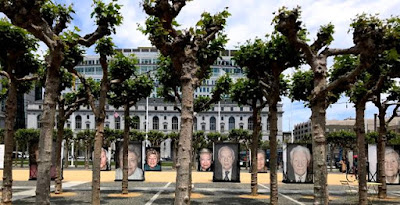 But I also learned about Device Pitstop over at Arctic and 36th next to Jens. Chris, in the picture, didn't have quite what I was looking for. He had another option for a higher price, but then asked if I had any layovers on the trip.
But I also learned about Device Pitstop over at Arctic and 36th next to Jens. Chris, in the picture, didn't have quite what I was looking for. He had another option for a higher price, but then asked if I had any layovers on the trip.
I mentioned LA and he was on the phone trying to find me cheaper options there.
I'm really impressed with these smaller stores. They all had much more personal service than the national chain stores. I also visited Computer Renaissance on King and Dimond. They didn't have any Apple products, and it seemed easier to stay with what I know. Today I went to where I should have gone - the Mac Store. This is the closest place and it's Mac. But he didn't have anything either - though it's nice to know he's there for repairs and help and he's a registered Apple repair service. That store used to be off Dimond between New and Old Seward on the north. But he did tell me about an iPad for sale at Walmart. But I don't want to shop at Walmart. No problem, he said. Best Buy will match competitors' prices.
So I biked over today - such great biking weather. Big thunderheads rising up from the mountains. Thunder is pretty rare in Anchorage
And now I have a new iPad for a decent price. And I suspect when we get back, it will be what I use when I go out of the house and need my computer. It weighs much less even with the keyboard/case I bought with it. And Best Buy gave a discount on that too. I hate buying new tech stuff and took my time. Actually I hate buying new stuff. We (people in general) have too much stuff.
Tomorrow our house sitter comes over for lunch. OK, the trip. I'm excited, but I have mixed feelings. I hate to leave Alaska in the summer and this week eating three meals a day out on the deck has been like a little paradise. After 32 years, the old deck was starting to have some structural issues. Moss had made the holes between the boards large enough in places for things to fall through. Some of the steps were not rotting out. So we had it rebuilt and with years of experience, we added a little more so that we could follow the sun. That took a lot of time - we had a builder, but still there was some disruption. Even though the builder put down plywood every night so we could use the deck the whole time.
So the trip. My daughter got us into this. I'll leave it at that. But she wanted to go to Argentina this summer to see the total solar eclipse in early July. We were invited. My granddaughter was involved, so we said yes. But we decided if we were going that far, we should stay a little longer and see more of the country. So we'll only overlap a little bit with them. But I've never been further south than Guatemala in the Western Hemisphere. But I wanted to travel lighter and without all the data that's on my computer. I was reading stories on line of people being robbed. And even though I've taken my computer a lot of places, I decided it was time to think about this more. Identity theft is a bigger issue these days. So with a much cheaper model, without much personal info on it, there should be less risk. And I can still keep you posted about what we see.
I've been thinking about how to introduce the trip and so now I have. Our front yard flowers have started their annual show.
The phlox are my favorite (well at the moment). There are several clumps like this of bright pink. And the individual flowers are tiny, but beautiful. Here's a 2008 post with closeups of the phlox and the forget-me-nots.
And earlier this spring, a moose chomped on the leaves of these lilies. But apparently it wasn't tasty and the buds hadn't started pushing up yet. Because there are lots of buds.


OK, here's one more picture I don't know where else to put. Saw it biking yesterday along 40th. They were on every 2nd or 3rd pole. I have mixed feelings about Assange. I don't think I'd like him as a person, but enough people I respect - like Daniel Ellsberg - feel prosecuting him is a serious attack on the First Amendment.
Just to be fair here, I googled "why Assange should be prosecuted." The first two pages were all about why he should NOT be. Or at best, stories about Assange. The closest I got to what I was searching for was: The debate over what Julian Assange's arrest means for freedom of the press, explained.
I can't help feeling that this is more about the anger against leaks in general. Under Obama it was embarrassing to have so much diplomatic gossip go public and as I've pointed out in earlier posts, no one has identified anyone who died because of the leaks. But they argue that he endangered many lives. Under Trump, anything Trump doesn't like published, he'd censor if he could.









































